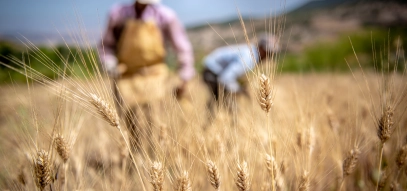Read More

India Regulatory Updates
Here you can find links to updates and advisories issued by various Indian Regulatory bodies in light of COVID-19
Reserve Bank of India (RBI) governor, Shaktikanta Das, has thereby announced a massive “booster-package” on Day#3 of the lockdown (March 27, 2020), in which it has sliced down the policy repo rate by 75 points (5.15% to 4.4%) and reverse repo rate by 90 premise points (4%), amongst a slew of other “money-driven” initiatives.
The rationale behind this is to expand liquidity in financial markets, reinforce monetary transmission and help ease layers of capital crunch, in an effort to bring back public confidence.
A critical component is to get money out in the market to all productive sectors, for which the RBI has declared the following course of action.
1. Auctioning Targeted Long Term Repo Operations (TLTROs)
In order to mitigate the effects of large sell-offs and resultant working capital constraints, the Reserve Bank will auction targeted term repos of up to three years for a total amount of up to INR 1 lakh crore, at a floating rate linked to the policy repo rate. Auction of the first tranche of INR 25,000 crore was held today (March 27, 2020), following which subsequent TLTRO auctions will be announced.
2. Cutting down on the Cash Reserve Ratio (CRR)
As a one-time measure to help banks overcome the COVID-19 upheaval, the CRR has been cut by 100 basis points to 3% of net demand and time liabilities (NDTL). This will release primary liquidity of about INR 1.37 lakh crore into the banking system, which shall be available for a period of one year ending on March 26, 2021.
The minimum daily CRR balance maintenance has been slid down to 80% (from the original 90%), being available up to June 26, 2020.
3. Relaxing Borrowings under the Marginal Standing Facility
Under the marginal standing facility (MSF), banks can borrow overnight by dipping up to 2% into the Statutory Liquidity Ratio (SLR). This limit has been increased to 3% of SLR with immediate effect, being available up to June 30, 2020.
These measures under the three-pronged approach will inject total liquidity of INR 3.74 lakh crore into the system.
Extending Payment on Term Loans
All commercial banks, co-operative banks, all-India Financial Institutions, and NBFCs are permitted to allow a moratorium of three months on the payment of instalments, with respect to all term loans outstanding as in March 2020.
Deferring Interest on Working Capital Facilities
Lending institutions are permitted to allow a three-month interest deferment, with respect to all working capital facilities sanctioned in the form of cash credit/overdraft, which are outstanding as in March 2020. The accumulated interest for the period will be paid after the expiry of the deferment period.
Deferring Last Tranche of the Capital Conservation Buffer (CCB)
The implementation of the last tranche – 0.625% of the CCB – has been further deferred from March 31, 2020 to September 30, 2020.
A host of other measures – on the lines of relaxing regulatory restrictions and opening new security markets – have also been penned down on the table, on both a short- and medium-term time horizon.
The RBI’s decision adjoins India’s series of COVID-19 stress-busters, just a day after the government rolled out a fiscal stimulus of INR 1.75 lakh crore, dubbed as the "Prime Minister Gareeb Kalyan scheme." The package is designed to tackle financial difficulties arising for the poor and migrant workers, which include providing direct cash transfers (under the DBT or Direct Benefit Transfer scheme) and food security-related steps.
Alongside this, the government has also announced a special INR 50 lakh medical insurance cover for all frontline workers, who are actively battling ground on the corona field.
At this stage, it is uncertain to pinpoint a clear end to the COVID-19 crisis, both on a national and global level. Nevertheless, the radical measures taken in the Indian periphery so far – from the Janta Curfew to the 21-day lockdown, fiscal stimulus and banking reforms – are looking to shorten the aftermath of the crisis to the last infected case.
The reaction of the market has been volatile lately and it can be expected to remain so, over the near short-run. The implications of such policy overhauls cannot be understood in a 20-minute sentiment spree, but over the course of the next few months, as we remove the virus out of the air and get people back on roads. Indicators such as consumer price index (CPI) inflation should then be stably targeted, production should promptly resume and spending further encouraged, in order to bring back the economy.
At the end of the day, Health is Wealth. The crux lies is in protecting the health of every individual in the short-run, which can then collectively pool together for a stronger and robust economy in the long-run.
This website uses cookies.
Some of these cookies are necessary, while others help us analyse our traffic, serve advertising and deliver customised experiences for you.
For more information on the cookies we use, please refer to our Privacy Policy.
This website cannot function properly without these cookies.
Analytical cookies help us enhance our website by collecting information on its usage.